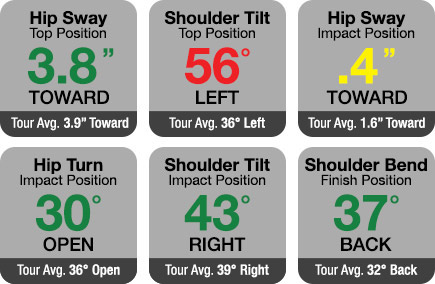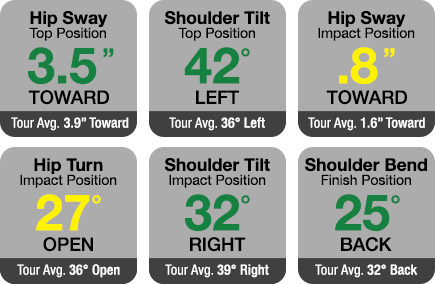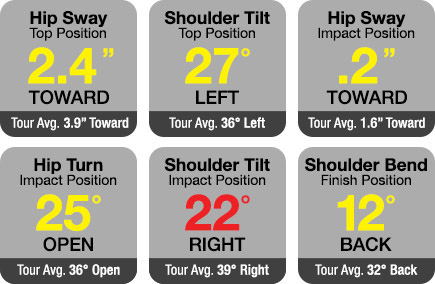Golf Swing Big Data
The most comprehensive fact-based swing study ever conducted
Having collected data from over 90 million golf swings during this time, our mission was to make sense of that powerful information and provide a fact-based analysis of how body positions within the swing correlate to skill level.
We sampled 48 different body motions from over 13,000 golfers of all abilities to create the GOLFTEC SwingTRU Motion Study.
Through our findings we have identified key body positions within the swing that directly correlate to a player’s handicap – conclusive evidence providing further insight into the golf swing and a golfer's most efficient methods to improve.
We’ve highlighted six body positions in this study that most highly correlated to skill level, ranging from a professional golfer to 30 handicap.
The Key Positions of the SwingTRU Study
Selected for their relation to skill level
The GOLFTEC SwingTRU Motion Study found a large number of correlations relating skill level to body positions within the swing. From the professional golfer to 30 handicap, we've highlighted six of these positions that most directly relate to skill level.
Hip Sway - Top Position
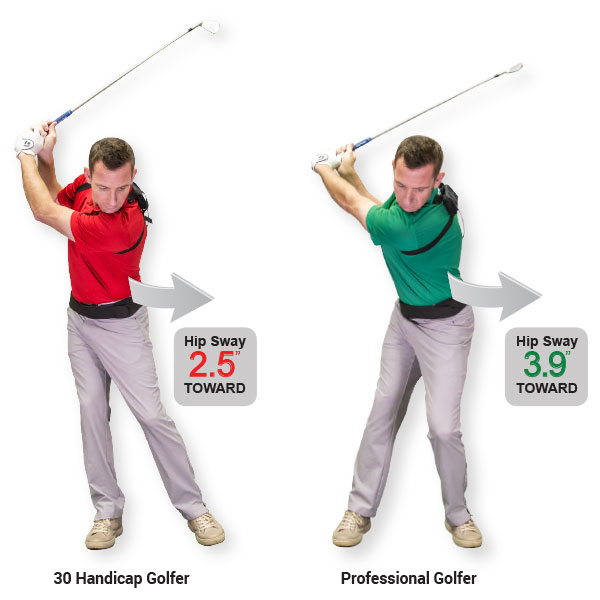
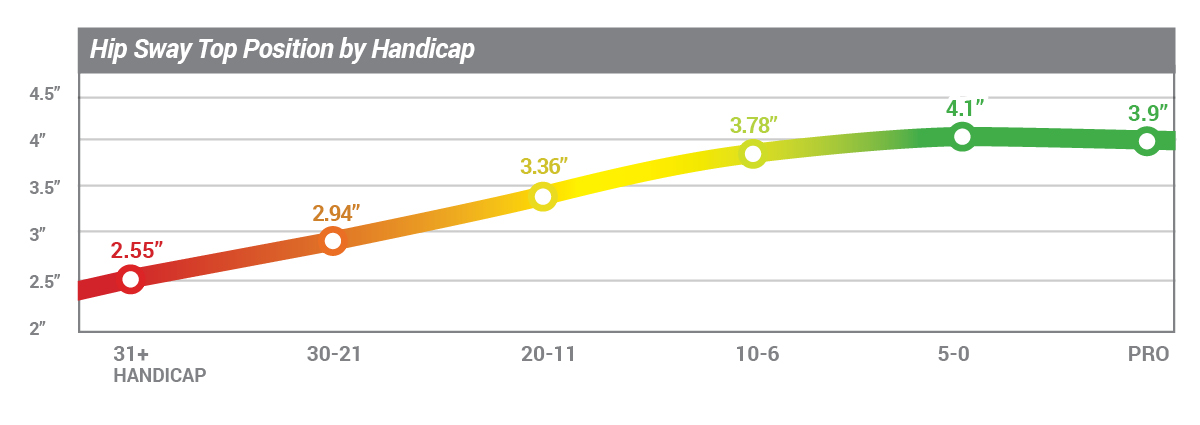
Description:
Hip Sway:The lateral movement of the hips toward or away from the target.
Conclusion: The lower the handicap, the more the hips have moved toward the target at the top of the backswing, closer to the professional golfer at 3.9 inches toward the target.
Key Benefits: Accuracy, Distance
Recommended Drill:
Shoulder Tilt - Top Position
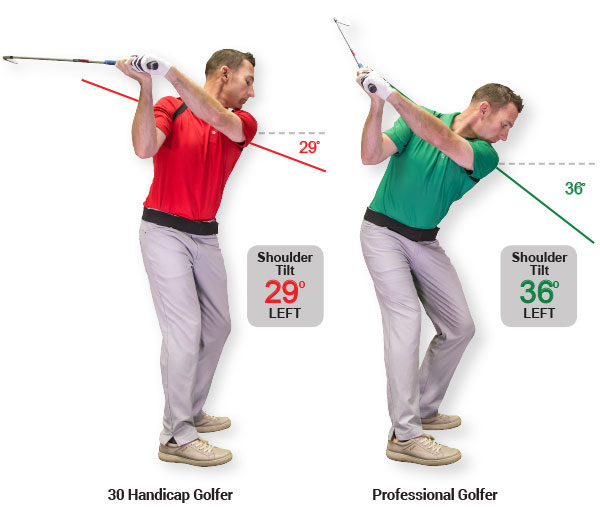
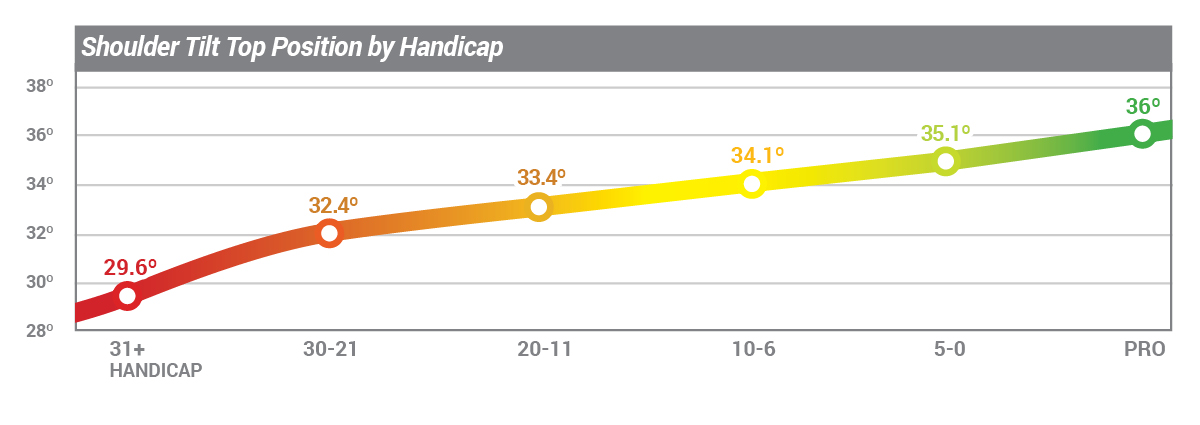
Description:
Shoulder Tilt:The angle of the shoulders measured against a level (upright) position.
Conclusion:The lower the handicap, the more the shoulders have tilted at the top of the backswing, closer the professional golfer at 36 degrees.
Key Benefits: Accuracy, Contact
Recommended Drill:
Hip Sway - Impact Position
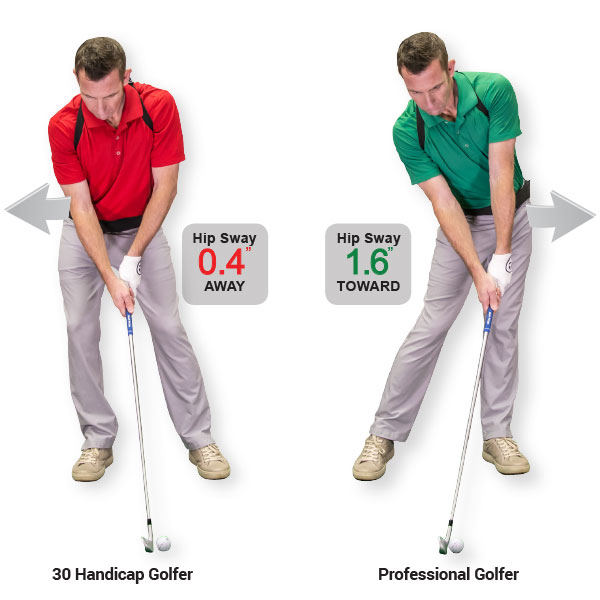

Description:
Hip Sway:The lateral movement of the hips toward or away from the target.
Conclusion:The lower the handicap, the more the hips have swayed toward the target at impact, closer to the professional golfer average of 1.6 inches toward the target.
Key Benefits: Accuracy, Contact
Recommended Drill:
Hip Turn - Impact Position
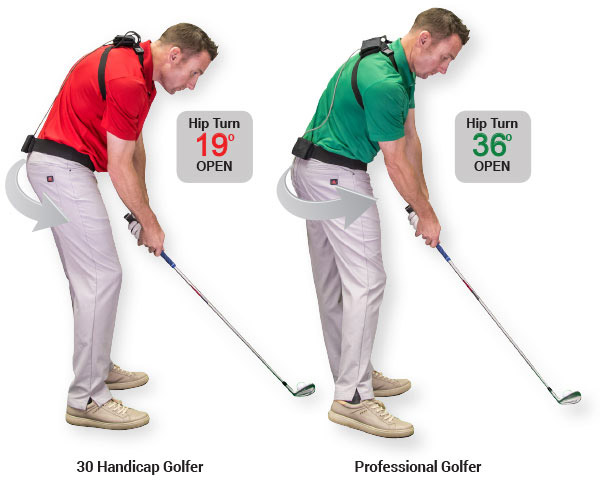

Description:
Hip Turn:The angle (rotation) of the hips in relation to the target line.
Conclusion:The lower the handicap, the more the hips have rotated open to the target at impact, closer to the professional golfer at 36 degrees open.
Key Benefits: Distance, Contact
Recommended Drill:
Shoulder Tilt - Impact Position
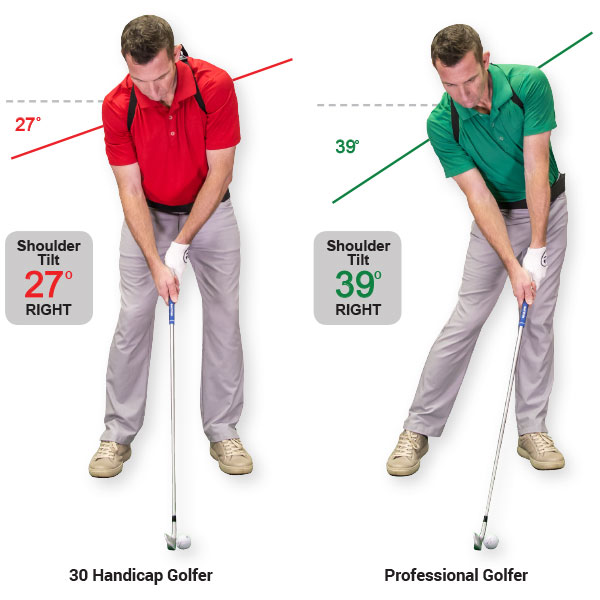
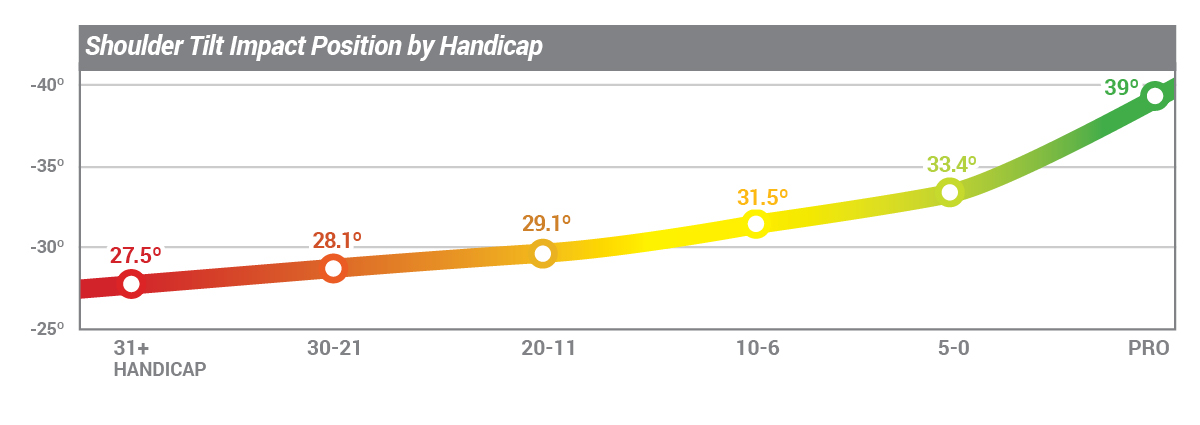
Description:
Shoulder Tilt:The angle of the shoulders measured against a level (upright) position.
Conclusion:The lower the handicap, the more the shoulders have tilted at impact, closer to the professional golfer at 39 degrees.
Key Benefits: Accuracy, Contact
Recommended Drill:
Shoulder Bend - Finish Position

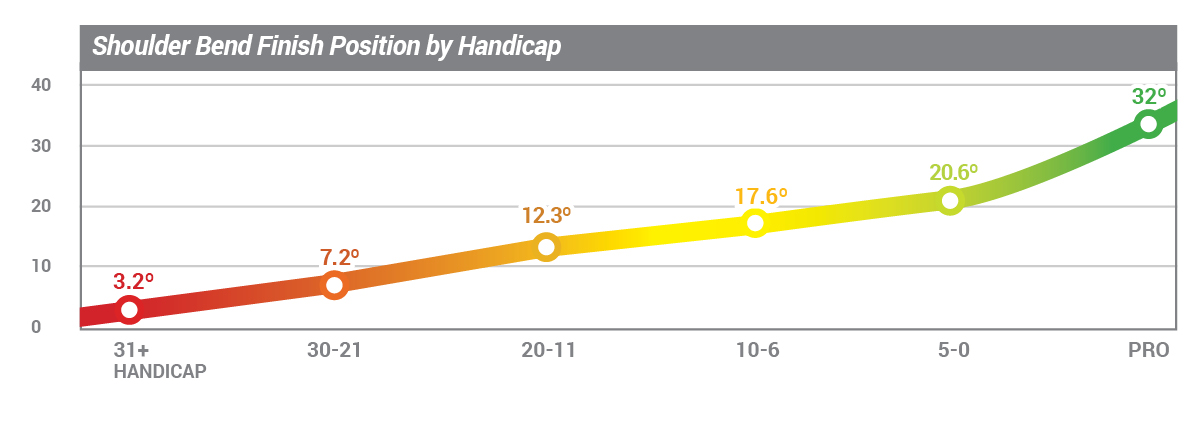
Description:
Shoulder Bend:The backward or forward movement of the shoulders.
Conclusion:The lower the handicap, the more the shoulders have bent back (away) from the target at the finish position, closer to the professional golfer at 32 degrees back.
Key Benefits: Distance, Contact
Recommended Drill:
- What is the SwingTRU Motion Study? The SwingTRU Motion Study is a summary of data we have collected from teaching over 6 million golf lessons since 1995, revealing which body motions correlate most directly to the success of a golfer.
- Why is the SwingTRU Motion Study important? This study gives GOLFTEC Certified Personal Coaches and their students factual data to determine differentiators between low- and high-handicap golfers. This creates a clear understanding to aid the most effective and efficient paths toward improvement.
- How were the six positions highlighted in the SwingTRU Motion Study chosen? Are there more positions that correlate to skill level, or only these six? The positions highlighted were chosen because they embody some of the most direct relationships to skill level, and are some of the most misunderstood measurements in the golf swing. There are many more measurements the study concluded that strongly correlate to a golfer’s success, but these six were chosen as a great starting point to help golfers improve.
- How does the SwingTRU Motion Study change GOLFTEC’s instruction? The SwingTRU Motion Study does not alter GOLFTEC’s instruction in any way, nor does it prescribe a specific method of instruction or swing theory. It simply provides factual information to specific motions within the swing that can be used for significant starting points to aid student improvement. The basis for all GOLFTEC instruction since our inception in 1995 remains unchanged -- we use technology to aid every lesson we provide, tailoring instruction precisely to the student’s needs and goals.
- Has the SwingTRU Motion Study changed GOLFTEC’s theories on the golf swing or best ways to teach it? GolfTEC’s instructional philosophy has not changed in any way as a result of this study. The findings merely factually reinforce the instructional practices we have used for many years. We do believe, however, some in the industry may be surprised by some of the conclusions realized from the findings.
- What does the SwingTRU Motion Study mean for me, the golfer? It can significantly reinforce the understanding of how your body moves, and should move, within your golf swing.This study provides a factual resource and starting point for improvement.
- How will evolving technology affect the SwingTRU Motion Study moving forward? We are excited to see what new technologies can unveil in the future, because we are just scratching the surface of how the best golfers play the game. Moving forward, we will also include data on ball flight and other motion measurements that provide direct correlations to skill level and a golfer's improvement.
SwingTRU Golfer Studies:
What does this mean for me... the golfer?
That as your body positions improve closer to the average measurements of a professional golfer, it directly coincides with an improvement in handicap.
But, of course nothing can replace the role of professional guidance and individualized instruction from GOLFTEC Certified Personal Coaches. So, if you’re truly interested in playing better golf, click below to talk to a Coach and find out what your SwingTRU numbers are.
Instruction, Drills and Golf News
From the GOLFTEC Scramble
GOLFTEC's official editorial site is your ultimate source for the latest tips and drills, news, equipment and more.
Subscribe to the Scramble Today and Play Better:
coming soon



